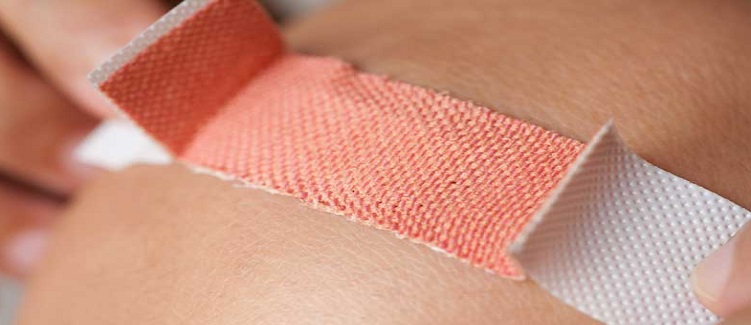While gauze and Band-Aids® serve their purpose in protecting broken skin, it is important to take a few steps before applying a bandage to a cut, scrape, or wound. Properly cleaning a wound helps with faster healing and prevents infections and unwanted complications. Follow the steps outlined below to treat superficial skin wounds and consult your doctor for proper guidelines and any questions. Seek medical attention at your local emergency department for large and deep wounds.
Nine Steps to Clean a Wound
- 1. Wash your hands thoroughly with soap and water. Before touching a wound, always wash and dry your hands. Touching an open wound with unwashed hands exposes the cut to germs, bacteria, and dirt, and could cause an infection. For more protection, wear disposable gloves.
- 2. Stop the bleeding. Minor cuts and scrapes usually stop bleeding on their own. But you may need to apply gentle pressure with a clean bandage or cloth to stop it sooner. Elevate the wound until the bleeding stops.
- 3. Rinse the wound under running tap water for 5 minutes. This will reduce the risk of infection. Wash around the wound with antibacterial soap, but do not apply soap directly to wound.
- 4. Cleanse the wound. Use an alcohol-free wipe or cloth/gauze pad dipped in either saline solution or water to gently dab or wipe the wound. Avoid using an antiseptic, such as hydrogen peroxide or iodine, that can irritate damaged skin and delay healing.
- 5. Carefully remove debris from skin. Clean a pair of tweezers with isopropyl alcohol and remove all dirt and debris from the wound bed. If you are unable to do so, please see your doctor.
- 6. Pat skin dry. Use a clean cloth or gauze pad to gently pat skin dry. Do not use a cotton ball or swab. The fibers can become stuck in the wound.
- 7. Use a topical antibiotic or petroleum jelly. Gently apply a thin layer of antibiotic ointment or petroleum jelly to the wound. This will prevent infection and scarring, and keep the area moist.
- 8. Apply a sterile dressing. Covering a wound helps keep it clean. Use either a bandage or a nonadhesive pad with a bandage or gauze held in place with paper tape. If blood soaks through the dressing, leave the soaked pad in place and add another dressing while applying pressure. Change the dressing once a day, or when it gets wet or dirty. Minor scrapes or scratches heal faster without a bandage and should be left uncovered.
- 9. Check the affected site and continue proper aftercare. Watch for signs of infection, such as redness, increasing pain, drainage, swelling, or warmth. If the wound is deep or dirty, get a tetanus shot (if you haven’t had one in the past 5 years).
When to Seek Medical Care for a Wound
While you can treat many cuts, scrapes, and wounds at home, get medical attention at your local emergency department if your wound:
- Is very large, very deep, or both.
- Is embedded with dirt or other objects, which cannot be easily removed.
- Is too painful for you to clean at home.
- Is near a major blood vessel or joint.
- Is caused by a human or animal bite.
- Shows signs of infection: redness and swelling or oozing pus.

